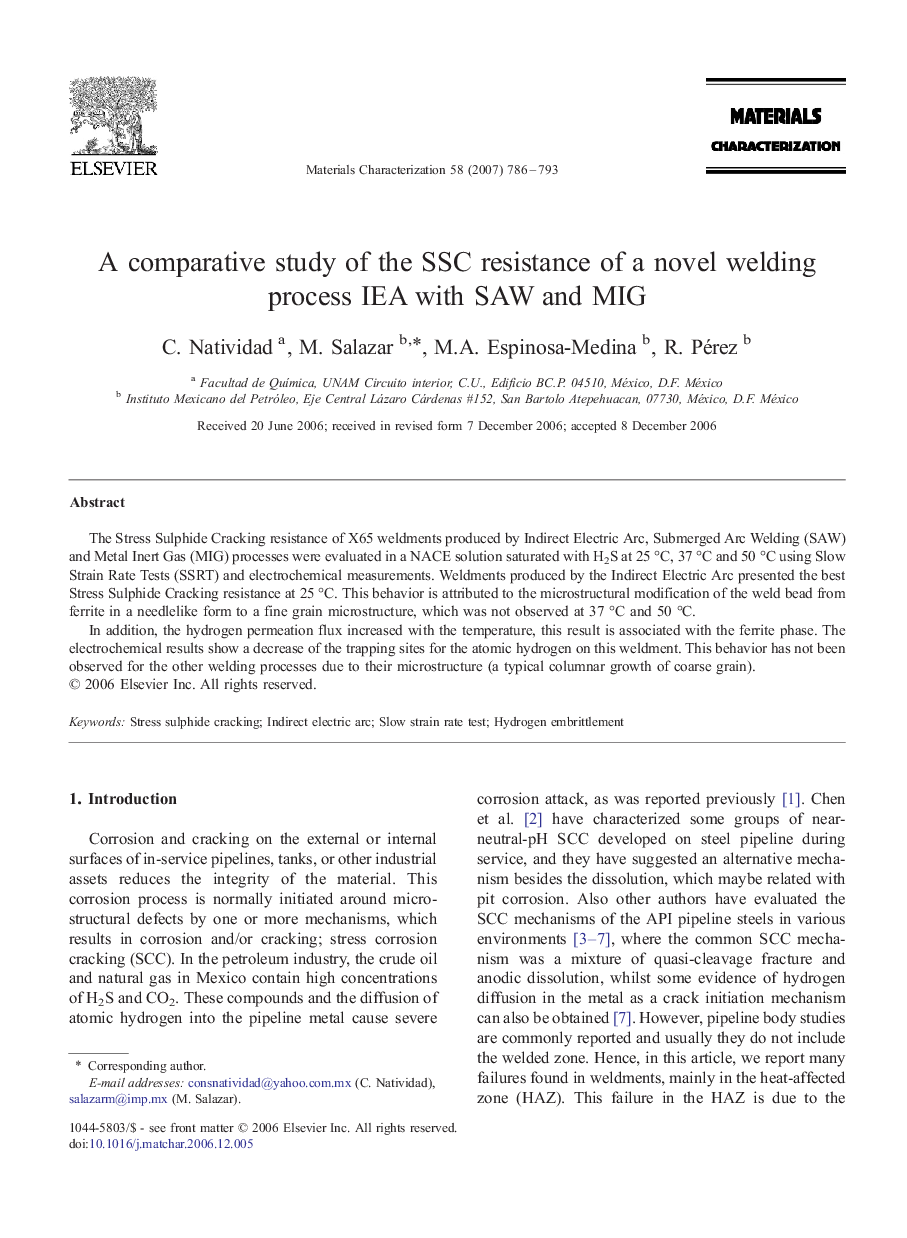| Article ID | Journal | Published Year | Pages | File Type |
|---|---|---|---|---|
| 1572444 | Materials Characterization | 2007 | 8 Pages |
The Stress Sulphide Cracking resistance of X65 weldments produced by Indirect Electric Arc, Submerged Arc Welding (SAW) and Metal Inert Gas (MIG) processes were evaluated in a NACE solution saturated with H2S at 25 °C, 37 °C and 50 °C using Slow Strain Rate Tests (SSRT) and electrochemical measurements. Weldments produced by the Indirect Electric Arc presented the best Stress Sulphide Cracking resistance at 25 °C. This behavior is attributed to the microstructural modification of the weld bead from ferrite in a needlelike form to a fine grain microstructure, which was not observed at 37 °C and 50 °C.In addition, the hydrogen permeation flux increased with the temperature, this result is associated with the ferrite phase. The electrochemical results show a decrease of the trapping sites for the atomic hydrogen on this weldment. This behavior has not been observed for the other welding processes due to their microstructure (a typical columnar growth of coarse grain).
